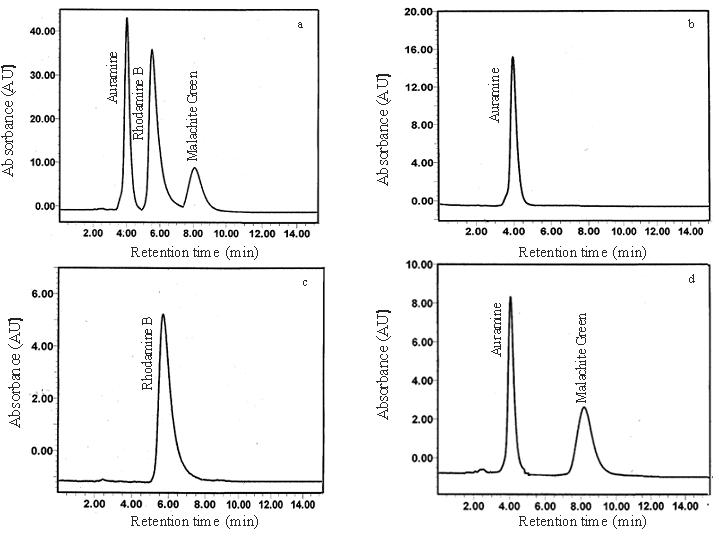5. A simple method for simultaneous deter-mination of basic dyes encountered in food preparations by reverse phase HPLC |
The present method employs a simple pre-treatment step, clean-up on polyamide SPE cartridges and HPLC resolution on C18 reverse phase for the detection of the three basic non-permitted dyes encountered in the food matrices. Polyamide cartridges have been opted because both acidic and basic dyes can be cleaned up due to its amphoteric nature. Analysis was performed on reversed phase C18 µ-Bondapak column using the isocratic mixture of acetonitrile: sodium acetate with a flow rate of 1.5 ml/min and utilizing a programmable λmax specific visible detection to monitor colors, achieving higher sensitivity and expanded scope to test multi- color blends. All the colors showed linearity with the regression coefficient of 0.9983 to 0.9995. The limit of detection (LOD) and limit of quantification (LOQ) ranged between 0.107-0.754 mg/L and 0.371-2.27 mg/L or mg/Kg, respectively. The intra-day and inter-day precision gave good relative standard deviation (RSDs) and the percentage recoveries in different food matrices ranged from 75-96.5%. The study demonstrates that the use of a combination of a simple SPE clean-up and HPLC resolution with UV-VIS end point detection was successful in screening the presence of these three basic non-permitted dyes individually or present in blend, in a variety of food matrices.
Dixit et al.; Journal of Association of Analytical Chemist International; 2011; 94; 1874-1881.  HPLC resolution of encountered three basic non-permitted colours in standard (a) and food samples (b,c and d). |